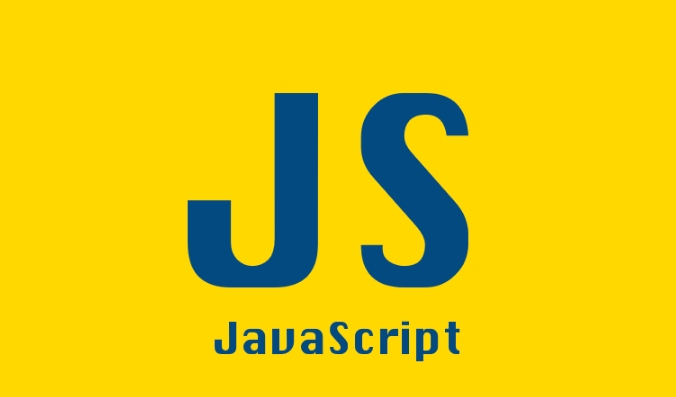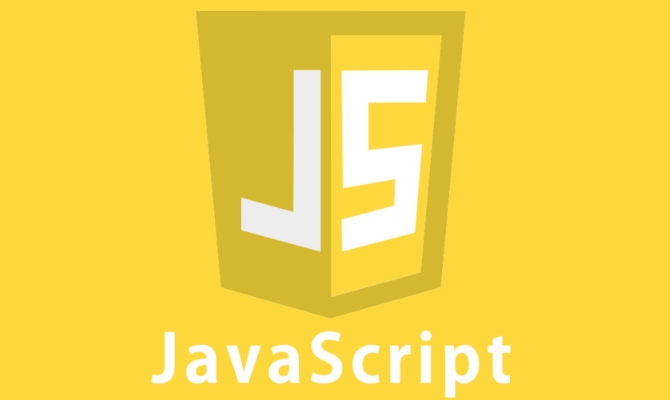React Hook Form simplifies advanced form handling in React by reducing re-renders and streamlining validation. 1. It uses uncontrolled components and refs for better performance. 2. Basic setup includes useForm for registration, validation, and error handling. 3. Nested fields are supported via dot notation, and dynamic fields are managed with useFieldArray. 4. Async validation, such as checking email availability, is implemented using the validate function. 5. Integration with UI libraries like MUI is achieved via Controller for complex components. 6. Watch enables conditional logic, while reset clears or resets form values. 7. Schema validation with Zod provides type safety and reusable rules via resolvers. Best practices include enabling shouldFocusError, choosing validation modes, avoiding inline functions, and using keys from useFieldArray to maintain state integrity, resulting in scalable and maintainable forms.

Handling forms in React can quickly become messy — managing state, validating inputs, showing errors, and submitting data often leads to bloated, hard-to-maintain components. React Hook Form is a lightweight, performant library that simplifies form management by leveraging uncontrolled components and refs, minimizing unnecessary re-renders.

Here’s how to handle advanced form patterns effectively using React Hook Form, from basic setup to complex scenarios like dynamic fields, async validation, and integration with UI libraries.
1. Why React Hook Form?
Before diving into advanced usage, it’s worth noting what makes React Hook Form stand out:

- ? Less re-renders: It uses uncontrolled inputs with refs to track values.
- ? Built-in validation: Supports both sync and async validation.
- ? Great TypeScript support.
- ? No need for value binding (
onChange,value) — just register inputs. - ? Easy integration with UI libraries like Material UI, Ant Design, etc.
2. Basic Setup and Validation
Start by installing:
npm install react-hook-form
A simple login form:

import { useForm } from 'react-hook-form';
function LoginForm() {
const { register, handleSubmit, formState: { errors } } = useForm();
const onSubmit = (data) => {
console.log(data);
};
return (
<form onSubmit={handleSubmit(onSubmit)}>
<input
{...register('email', {
required: 'Email is required',
pattern: { value: /^\S @\S $/i, message: 'Invalid email' }
})}
placeholder="Email"
/>
{errors.email && <p>{errors.email.message}</p>}
<input
{...register('password', { required: 'Password is required' })}
type="password"
placeholder="Password"
/>
{errors.password && <p>{errors.password.message}</p>}
<button type="submit">Login</button>
</form>
);
}This covers required and pattern validation with inline error messages.
3. Working with Nested and Dynamic Fields
Nested Objects
React Hook Form supports deep field names. Use dot notation or array indices:
<input {...register('address.street')} />
<input {...register('address.city')} />Data will be structured as:
{
address: {
street: "123 Main St",
city: "Boston"
}
}Dynamic Fields (Arrays)
Add or remove inputs at runtime, such as a list of hobbies:
function DynamicFields() {
const { register, control, handleSubmit, watch } = useForm({
defaultValues: { hobbies: [''] }
});
const { fields, append, remove } = useFieldArray({
control,
name: 'hobbies'
});
const onSubmit = (data) => console.log(data);
return (
<form onSubmit={handleSubmit(onSubmit)}>
{fields.map((field, index) => (
<div key={field.id}>
<input
{...register(`hobbies.${index}`)}
placeholder={`Hobby ${index 1}`}
/>
<button type="button" onClick={() => remove(index)}>Remove</button>
</div>
))}
<button type="button" onClick={() => append('')}>Add Hobby</button>
<button type="submit">Submit</button>
</form>
);
}? Make sure to import
useFieldArrayfromreact-hook-form.
4. Async Validation (e.g., Check if Email Exists)
You can validate against an API:
const validateEmail = async (email) => {
const res = await fetch(`/api/check-email?email=${email}`);
const { isAvailable } = await res.json();
return isAvailable ? true : 'Email already taken';
};
// In your input:
<input
{...register('email', {
required: 'Required',
validate: validateEmail
})}
/>This runs only when the field is touched or during submission.
5. Integrating with UI Libraries (e.g., MUI)
React Hook Form works seamlessly with external components. For Material UI:
import { TextField } from '@mui/material';
import { Controller } from 'react-hook-form';
<Controller
name="username"
control={control}
rules={{ required: 'Username is required' }}
render={({ field, fieldState }) => (
<TextField
{...field}
label="Username"
error={!!fieldState.error}
helperText={fieldState.error?.message}
/>
)}
/>Use Controller for non-native inputs or complex components (date pickers, selects, etc.).
6. Watch, Reset, and Conditional Logic
Watch Values
const watchedValues = watch(); // watch all
const email = watch('email'); // watch single fieldUse watch to enable conditional rendering:
{watch('subscribe') && (
<input {...register('newsletterEmail')} placeholder="Newsletter Email" />
)}Reset Form
After submission:
const onSubmit = (data) => {
console.log(data);
reset(); // clears form
};You can also reset with default values:
reset({ email: '', hobbies: [''] });7. Schema Validation with Zod (Recommended)
For complex validation, pair React Hook Form with Zod:
npm install zod @hookform/resolvers
Define schema:
import { z } from 'zod';
import { zodResolver } from '@hookform/resolvers/zod';
const schema = z.object({
email: z.string().email('Invalid email'),
age: z.number().min(18, 'Must be 18 '),
});
function Form() {
const { handleSubmit, register, formState: { errors } } = useForm({
resolver: zodResolver(schema),
defaultValues: { email: '', age: 18 }
});
const onSubmit = (data) => console.log(data);
return (
<form onSubmit={handleSubmit(onSubmit)}>
<input {...register('email')} />
{errors.email && <p>{errors.email.message}</p>}
<input type="number" {...register('age', { valueAsNumber: true })} />
{errors.age && <p>{errors.age.message}</p>}
<button type="submit">Submit</button>
</form>
);
}This gives you type safety and reusable validation logic.
Final Tips
- Use
useFormwithshouldFocusError: trueto auto-focus invalid fields. - Enable
mode: 'onBlur'or'onChange'inuseForm()for real-time validation. - Avoid inline functions in
register()— they can cause performance issues. - Always use
keyfromuseFieldArrayfields to prevent state issues.
Advanced form handling doesn’t have to be complex. With React Hook Form, you get a clean, scalable, and efficient solution that handles everything from simple inputs to deeply nested, dynamically changing forms.
Basically, once you get past the initial learning curve, it saves a ton of boilerplate — and your future self will thank you.
The above is the detailed content of Advanced Form Handling in React with React Hook Form. For more information, please follow other related articles on the PHP Chinese website!

Hot AI Tools

Undress AI Tool
Undress images for free

Undresser.AI Undress
AI-powered app for creating realistic nude photos

AI Clothes Remover
Online AI tool for removing clothes from photos.

Clothoff.io
AI clothes remover

Video Face Swap
Swap faces in any video effortlessly with our completely free AI face swap tool!

Hot Article

Hot Tools

Notepad++7.3.1
Easy-to-use and free code editor

SublimeText3 Chinese version
Chinese version, very easy to use

Zend Studio 13.0.1
Powerful PHP integrated development environment

Dreamweaver CS6
Visual web development tools

SublimeText3 Mac version
God-level code editing software (SublimeText3)

Hot Topics
 Why should you place tags at the bottom of the ?
Jul 02, 2025 am 01:22 AM
Why should you place tags at the bottom of the ?
Jul 02, 2025 am 01:22 AM
PlacingtagsatthebottomofablogpostorwebpageservespracticalpurposesforSEO,userexperience,anddesign.1.IthelpswithSEObyallowingsearchenginestoaccesskeyword-relevanttagswithoutclutteringthemaincontent.2.Itimprovesuserexperiencebykeepingthefocusonthearticl
 What is event bubbling and capturing in the DOM?
Jul 02, 2025 am 01:19 AM
What is event bubbling and capturing in the DOM?
Jul 02, 2025 am 01:19 AM
Event capture and bubble are two stages of event propagation in DOM. Capture is from the top layer to the target element, and bubble is from the target element to the top layer. 1. Event capture is implemented by setting the useCapture parameter of addEventListener to true; 2. Event bubble is the default behavior, useCapture is set to false or omitted; 3. Event propagation can be used to prevent event propagation; 4. Event bubbling supports event delegation to improve dynamic content processing efficiency; 5. Capture can be used to intercept events in advance, such as logging or error processing. Understanding these two phases helps to accurately control the timing and how JavaScript responds to user operations.
 A definitive JS roundup on JavaScript modules: ES Modules vs CommonJS
Jul 02, 2025 am 01:28 AM
A definitive JS roundup on JavaScript modules: ES Modules vs CommonJS
Jul 02, 2025 am 01:28 AM
The main difference between ES module and CommonJS is the loading method and usage scenario. 1.CommonJS is synchronously loaded, suitable for Node.js server-side environment; 2.ES module is asynchronously loaded, suitable for network environments such as browsers; 3. Syntax, ES module uses import/export and must be located in the top-level scope, while CommonJS uses require/module.exports, which can be called dynamically at runtime; 4.CommonJS is widely used in old versions of Node.js and libraries that rely on it such as Express, while ES modules are suitable for modern front-end frameworks and Node.jsv14; 5. Although it can be mixed, it can easily cause problems.
 How does garbage collection work in JavaScript?
Jul 04, 2025 am 12:42 AM
How does garbage collection work in JavaScript?
Jul 04, 2025 am 12:42 AM
JavaScript's garbage collection mechanism automatically manages memory through a tag-clearing algorithm to reduce the risk of memory leakage. The engine traverses and marks the active object from the root object, and unmarked is treated as garbage and cleared. For example, when the object is no longer referenced (such as setting the variable to null), it will be released in the next round of recycling. Common causes of memory leaks include: ① Uncleared timers or event listeners; ② References to external variables in closures; ③ Global variables continue to hold a large amount of data. The V8 engine optimizes recycling efficiency through strategies such as generational recycling, incremental marking, parallel/concurrent recycling, and reduces the main thread blocking time. During development, unnecessary global references should be avoided and object associations should be promptly decorated to improve performance and stability.
 How to make an HTTP request in Node.js?
Jul 13, 2025 am 02:18 AM
How to make an HTTP request in Node.js?
Jul 13, 2025 am 02:18 AM
There are three common ways to initiate HTTP requests in Node.js: use built-in modules, axios, and node-fetch. 1. Use the built-in http/https module without dependencies, which is suitable for basic scenarios, but requires manual processing of data stitching and error monitoring, such as using https.get() to obtain data or send POST requests through .write(); 2.axios is a third-party library based on Promise. It has concise syntax and powerful functions, supports async/await, automatic JSON conversion, interceptor, etc. It is recommended to simplify asynchronous request operations; 3.node-fetch provides a style similar to browser fetch, based on Promise and simple syntax
 var vs let vs const: a quick JS roundup explainer
Jul 02, 2025 am 01:18 AM
var vs let vs const: a quick JS roundup explainer
Jul 02, 2025 am 01:18 AM
The difference between var, let and const is scope, promotion and repeated declarations. 1.var is the function scope, with variable promotion, allowing repeated declarations; 2.let is the block-level scope, with temporary dead zones, and repeated declarations are not allowed; 3.const is also the block-level scope, and must be assigned immediately, and cannot be reassigned, but the internal value of the reference type can be modified. Use const first, use let when changing variables, and avoid using var.
 JavaScript Data Types: Primitive vs Reference
Jul 13, 2025 am 02:43 AM
JavaScript Data Types: Primitive vs Reference
Jul 13, 2025 am 02:43 AM
JavaScript data types are divided into primitive types and reference types. Primitive types include string, number, boolean, null, undefined, and symbol. The values are immutable and copies are copied when assigning values, so they do not affect each other; reference types such as objects, arrays and functions store memory addresses, and variables pointing to the same object will affect each other. Typeof and instanceof can be used to determine types, but pay attention to the historical issues of typeofnull. Understanding these two types of differences can help write more stable and reliable code.
 How to traverse the DOM tree (e.g., parentNode, children, nextElementSibling)?
Jul 02, 2025 am 12:39 AM
How to traverse the DOM tree (e.g., parentNode, children, nextElementSibling)?
Jul 02, 2025 am 12:39 AM
DOM traversal is the basis of web page element operation. Common methods include: 1. Use parentNode to obtain the parent node, and can be chained to find it upward; 2. children return a collection of child elements, accessing the first or end child elements through the index; 3. nextElementSibling obtains the next sibling element, and combines previousElementSibling to realize the same-level navigation. Practical applications such as dynamically modifying structures, interactive effects, etc., such as clicking the button to highlight the next brother node. After mastering these methods, complex operations can be achieved through combination.






